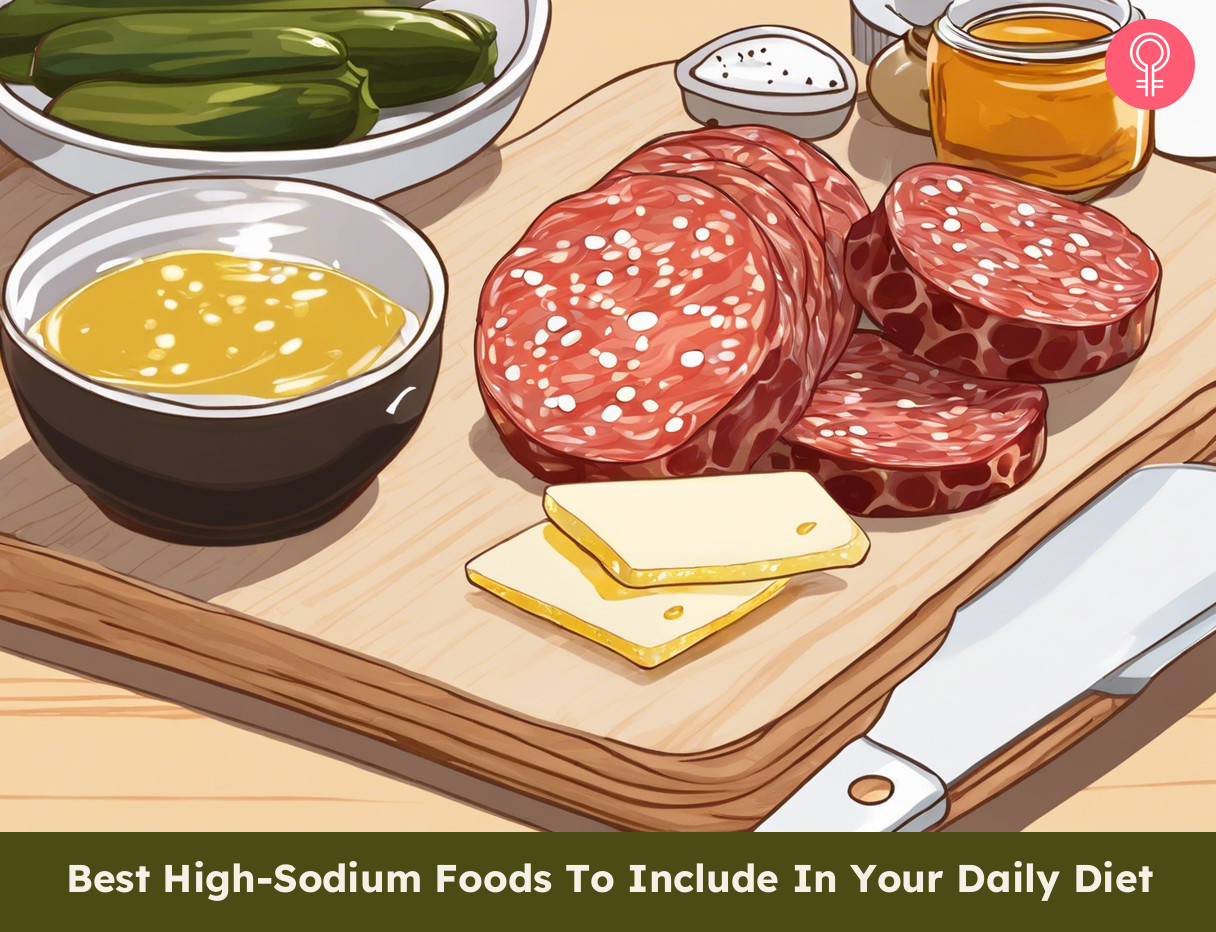Salt is a crucial mineral that is associated with numerous physical functions. It stabilizes the water degrees in your cells in addition to electrolyte (potassium, calcium, and magnesium) levels. Sodium affects muscle contractions and improves your heart’s health by regulating blood volume and pressure ( 1 ). Maintaining sodium balance is important since too much of it can be harmful ( 2 ). This article discusses the importance of sodium, the recommended intake, dietary sources, and what to avoid. Keep reading.
In This Article
What Is Sodium? Why Is It Essential?
First things first.
Sodium is crucial. Healthcare advertising firms (some of them, we imply) have rejected sodium and stained its picture. However guess what? Much like other minerals, sodium is additionally one. It is categorized as an electrolyte as it brings an electric fee ( 3 ).
It works with various other electrolyte minerals like potassium, calcium, and magnesium to balance the water degrees in your cells. It even promotes your nerve impulses and plays a role in muscle contractions ( 2 ).
It regulates blood volume and blood pressure, thereby enhancing the health of your heart ( 1 ), ( 4 ). We mean, hey, sodium is important.
TriviaThe British chemist Humphry Davy first isolated sodium by electrolysis of sodium hydroxide in 1807.
And oh, by the way, what are the foods high in sodium?
What Are The Foods High In Sodium?
Here is the list of sodium-rich foods:
- Table salt
- Salami
- Pickles
- Soy sauce
- Processed cheese
- Ham
- Beef jerky
- Celery
- Olives
- Swiss chard
- Shrimp
1. Table Salt
Serving size – 1 tablespoon (18 grams)
Sodium – 6980 milligrams
Daily value – 303%
As the values show, table salt is excessively high in sodium ( 5 ). You can add a pinch of it in your dishes for taste.
Yet if you are perfectly healthy, do not avoid table salt totally. As we state, sodium is very important for wellness.
How To Include In Your Diet
Add a pinch of it to your dishes.
Kristina shared her experience of getting on a salt-free diet regimen for over 8 years and exactly how including hot yoga to her common physical fitness routine made her tired in the early morning. Her train recommended including a pinch of salt to her food to alleviate the tired sensation. She claimed," I have not observed any kind of swelling, my energy levels have not totally changed or anything like that. I have not been slow-moving, either. I simply really feel extremely secure and regular. There have actually not been any severe modifications that I've seen physically after consuming salt besides I feel a bit more energised ( i ).”
TriviaSalt has traditionally been an important product due to its duty in human wellness, as seen by the English word 'wage,' which originates from salarium, the wafers of salt sometimes supplied to Roman troops along with their various other salaries.
2. Salami

Serving size – 113 grams
Sodium – 2,550 milligrams
Daily value – 106%
This is the amount of sodium one package (or 4 oz) of dry or hard pork salami contains ( 6 ). Salami additionally has decent amounts of iron and vitamin B12-- which secure the immune system and are vital for brain health and wellness ( 7 ), ( 8 ), ( 9 ).
How To Include In Your Diet
You can use it in your breakfast sandwich.
3. Pickles
Serving size – 143 grams
Sodium – 1,251 milligrams
Daily value – 52%
Since pickles are made through the process of fermentation, they contain a good amount of probiotics. These probiotics can improve gut health ( 10 ). And if they are fruit or vegetable pickles, you also have an added antioxidant advantage ( 11 ).
How To Include In Your Diet
Layering pickle slices on a peanut butter sandwich for breakfast can be a good start to your day.
4. Soy Sauce
Serving size – 18 grams
Sodium – 1,006 milligrams
Daily value – 42%
A 2005 study found that soy sauce has anti-allergenic properties. The sauce holds great promise in treating allergies, although more research is needed ( 12 ).
The sauce is also rich in isoflavones, which are natural antioxidants ( 13 ).
How To Include In Your Diet
You can use soy sauce as a seasoning while sautéing vegetables.
Related: Soy Sauce: Benefits, Nutrition Facts, Recipes, Risks, And Alternatives
5. Processed Cheese
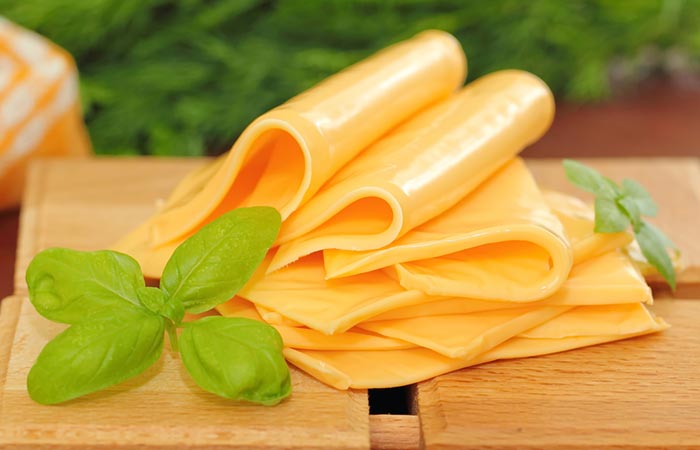
Serving size – 232 grams
Sodium – 745 milligrams
Daily value – 31%
Similar to a lot of meat foods, pork additionally has a healthy and balanced quantity of protein and zinc, a mineral important for your immune system ( 14 ), ( 15 ).
How To Include In Your Diet
You can instead go for cheese choices that would certainly have gone through less processing. Some of the much healthier alternatives include ricotta or home cheese.
Simply add cheese to your breakfast toast. Or add the slices to a salad.
6. Ham
Serving size – 56 grams
Sodium – 730 milligrams
Daily value – 30%
Just like the majority of meat foods, ham likewise has a healthy quantity of protein and iron. It also consists of good degrees of zinc, a mineral crucial for your immune system.
How To Include In Your Diet
Opting for lean ham can be a better alternative. You can utilize this pork to make a protein-rich sandwich. Or perhaps slice it right into pieces and contribute to your breakfast omelet.
Related: Is Eating Ham Healthy? Health Benefits And Possible Side Effects
7. Beef Jerky
Serving size – 20 grams
Sodium – 443 milligrams
Daily value – 18%
It is frequently called healthy fast food. It is high in protein. The most effective component regarding beef jerky is it doesn't elevate your insulin levels, many thanks to its high fat and reduced carbohydrate content ( 16 ). But better check for chemical-free brands as certain others are loaded with preservatives and aren’t worth your money.
How To Include In Your Diet
Simply grate beef jerky over a fresh salad.
8. Celery
Serving size – 110 grams
Sodium – 88 milligrams
Daily value – 4%
This probably is the healthiest in the listing. The vegetable is an extensive resource of antioxidants and other advantageous enzymes ( 17 ). It also contains vitamins C and K and potent minerals like potassium and folate ( 18 ).
How To Include In Your Diet
Celery is mostly water, so raw celery works fine. You can also add it to your everyday salad.
Related: 16 Celery Benefits, How To Consume It, And Side Effects
9. Olives
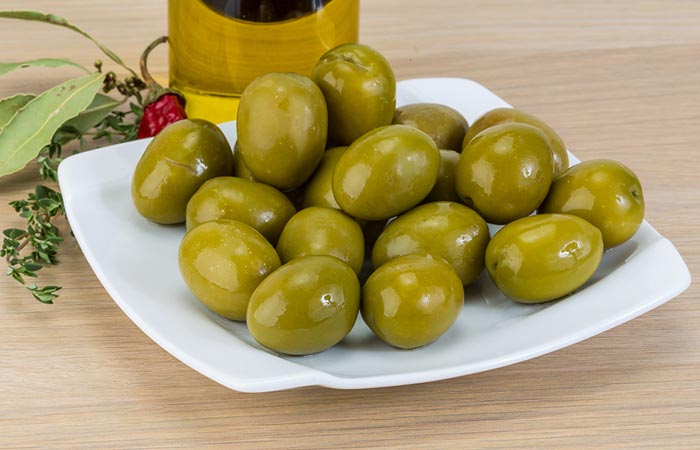
Serving size – 8 grams
Sodium – 72 milligrams
Daily value – 3%
Olives are loaded with anti-oxidants, whose importance we can not discuss enough. There are various other substances in olives that lower negative cholesterol (as a result of MUFA content) and even avoid bone disorders ( 19 ), ( 20 ).
How To Include In Your Diet
You can add olives to your breakfast omelet.
10. Swiss Chard
Serving size – 36 grams
Sodium – 77 milligrams
Daily value – 3%
Another vegetable in the list that is super-rich in vitamin K – an essential component for strong bones ( 21 ), ( 22 ). It also contains good amounts of vitamin A that is important for skin and vision health ( 23 ).
How To Include In Your Diet
Add the veggie to your salad.
11. Shrimp
Serving size – 100 grams
Sodium –111 milligrams
Daily Value – 5%
Shrimp is an exceptional source of healthy protein and sodium. It is filled with nutrients and minerals such as iodine, zinc, magnesium, and phosphorus. Shrimps support muscle mass growth and repair service and additionally have cholesterol-lowering homes (24 ). Wild-caught shrimps generally have much less salt than farm-raised and refined shrimps.
How To Include in Your Diet
Integrate shrimp right into your dishes by cooking, stir-frying, or steaming it. You can add shrimp to salads, low-calorie pasta, or a quinoa morning meal dish. Nevertheless, as it has good amounts of salt, try to eat it in small amounts and restrict it to two times a week.
Well, you saw the foods high in sodium. But wait – do you think you are getting enough sodium?
Are You Getting Enough Sodium?
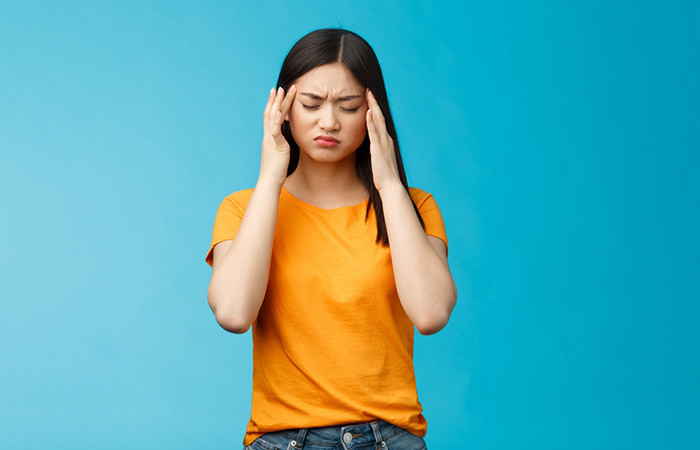
We lose a little sodium each day via sweat. But our diet regimen makes up for it. In case your sodium degrees are exceedingly low, you could experience the complying with signs ( 24 ):
- Headache
- Nausea and vomiting
- Confusion
- Muscle cramps
- Irritability
- Weakness and fatigue
How do you ensure you are getting enough sodium? By sticking to the RDA of sodium.
What Is The Recommended Daily Allowance Of Sodium?
It is 2300 milligrams or much less. Which is equal to just about one tsp of salt. That's it. And it is nearly impossible to not get that much salt in a day.
Particular groups of individuals, especially those with heart disease/high blood pressure, require to minimize their sodium intake to 1500 milligrams or much less a day ( 1 ).
Sodium is important. But in no other way are we supporting a high salt consumption. We assume you currently are having enough salt in your diet (like lots of people).
Hence, it is important that you look at the other end of the spectrum.
Note: An individual's certain demands for salt can transform depending on their age, health and wellness, drugs, and diet plan as a whole. Likewise, always get in touch with a healthcare provider prior to making any type of adjustments to your sodium consumption, specifically if you have any health and wellness conditions like hypertension and heart problems.
How To Lower Your Sodium Intake?
Following are some of the ways you can reduce your sodium intake:
- Choose fresh fruits and vegetables over processed foods as an evening snack.
- Use fresh meat instead of the packaged ones like deli meats, cured meats, and sausage.
- Select seasonings or spices that do not list sodium as one of their ingredients.
- Compare the tags of various brand names of the very same food, and choose the one with the least degrees of salt.
- Do your research study prior to eating in restaurants. Visit the dining establishment's web site and examine the amount of sodium in each meal (if the details is available). You can after that get the one with the least salt as soon as you go to the restaurant.
And also, avoid foods high in sodium. What are they?
What Are The High-Sodium Foods To Avoid?
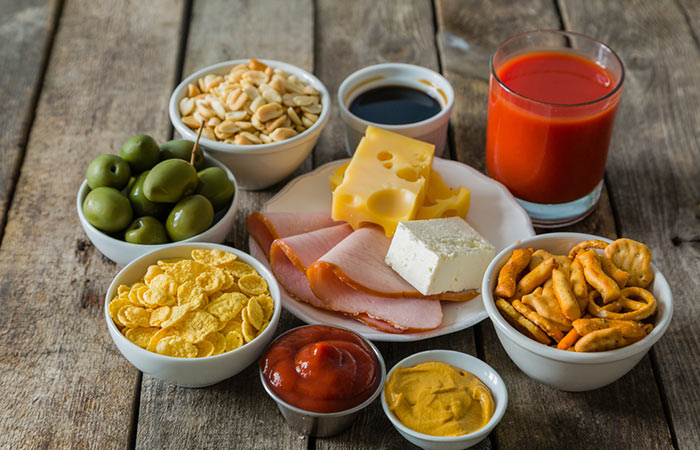
Adhering to is the listing of some of one of the most usual high-sodium foods that you can prevent to maintain a look at your salt levels:
- Smoked fish, cured meat, or canned meat like anchovies, fish, or cold cuts
- Salted nuts
- Canned beans with added salt
- Frozen meals like breaded meats and dinners including pizza and burritos
- Buttermilk
- Processed cheese and sauces
- Breads and rolls with salted tops
- Salted crackers, popcorn, chips, pretzels, and other similar snack foods with high salt content.
- Prepackaged and processed mixes of potatoes, pasta, rice, and stuffing
- Vegetables made with ham, bacon, or even salted pork
- Commercially prepared pasta and salsa or tomato sauce
- Regular canned soup
- Cup of instant noodles and seasoned ramen mixes
- Seasoning salt and other sauces and marinades
- Margarine or salted butter
- Instant pudding or cake
- Ketchup and other condiments
- Bottled salad dressings
We ask you to avoid all of these because excess sodium can cause serious problems. Yes, sodium is vital. But never in excess.
The dangers of excess sodium include:
- Raised high blood pressure. The excess sodium holds excess liquid in the body, and this places a burden on the heart. This eventually brings about heart attacks ( 25 ).
- As per research, Higher intake of sodium can also cause stomach/gastric cancer ( 26 ).
- Weakening of bones is one more condition triggered by excess salt intake. The quantity of calcium your body sheds with peeing raises with the quantity of sodium you eat ( 27 ).
Which Foods Contain Less Sodium?
You can instead replace the aforementioned high-sodium foods with any of these:
- Fish or shellfish
- Unsalted nuts and seeds
- Eggs
- Chicken or turkey breast (without skin)
- Dried peas and beans
- Fresh fruits and vegetables
- Lentils and oats
Infographic: 5 Sodium-Rich Foods To Consume Daily
Salt is necessary for many bodily functions. It stabilizes water and electrolyte levels in the cells, influences muscle contractions, improves heart wellness, and manages blood pressure. Thus, it requires to be consumed in optimal amounts. There are specific foods that have a higher sodium content contrasted to others that you can include in your daily diet regimen. Go through the infographic listed below to find out about these sodium-rich foods.
Illustration:
Get the high-quality PDF version of this infographic.
Unlock the power of a sodium-rich diet for optimal wellness. Check out foods high in salt in this interesting video to boost your nourishment video game.
While salt helps keep the electrolyte balance of your body, it is necessary not to overdo it. You must therefore know food things with possibly high sodium content. Pickles, soy sauce, cheese, pork, olives, salami, and beef jerky are a few of the commonly taken in food items that can enhance your salt degrees beyond the required restriction. While the suggested daily allowance of salt is 2300 mg or much less, individuals with high blood pressure or other heart conditions ought to limit their salt intake to less than 1500 mg per day. In addition to preventing sodium-rich fruits and vegetables, selecting fresh fruits and veggies over processed food aids keep the best salt and electrolyte balance in your body.
Frequently Asked Questions
How good (or bad) is sodium for fat loss?
Though excess sodium doesn't have much of an impact on fat loss, it sure can obstruct fat burning. This is since sodium intake causes you to maintain even more water in your system-- causing a boost in water weight.
Is a high-sodium intake bad for health irrespective of the age?
Absolutely. High sodium intake increases calcium loss from the bones and may cause water retention in the body.
How does the sodium content in processed foods compare to that in fresh, whole foods?
Processed foods normally have a greater sodium web content than fresh, whole foods. The additional salt in them adds taste and aids extend their service life.
How does the sodium content in restaurant or fast food meals compare to home-cooked meals?
Restaurant and fast food meals have more sodium content than home-cooked meals. The additional salt further enhances their taste.
Key Takeaways
- Sodium maintains the electrolyte balance in the body and regulates healthy blood pressure.
- Table salt, processed cheese, soy sauce, celery, olives, and ham are some foods that are rich in sodium.
- Headaches, confusion, muscle cramps, nausea, and weakness are some symptoms of low sodium in the body.
- You can consume fish, eggs, or chicken to lower your daily sodium intake.


